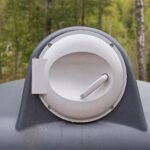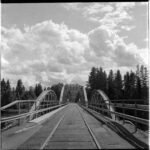My latest purchase, and replacement for the D3000, is the D3300. I traded up primarily so that it matches better with my main camera, the D5500.
Apparently the two cameras have the same 24 megapixel CMOS sensor (Sony IMX-193-AQK). And they were, as far as I know, the first models in their respective series to drop the low pass (anti-aliasing) filter, which supposedly means sharper images (not that I really know if there actually is a difference).
But when I am out doing stories, I often carry both cameras, the D5500, often with the 18-200mm lens and the Nissin flash, and the D3300, usually with the 35mm lens.
The D3300 is noticeably faster than the D3000, in pretty much every way I can think of. Compared to the D5500 the only thing I miss sometimes is the flip out screen. They both do video, which I honestly don’t use much. And they also take the same batteries, very convenient.
For what it is, an entry-level camera, it is very nice. All photos here are taken with the D3300 and the Nikon 50mm f/1.8G lens.
Specifications:
- Introduced in January 2014
- APS-C CMOS sensor 24 megapixel
- 6,000 × 4,000 pixels
- ISO: 100 – 12,800, expandable to 25,600
- 11 point autofocus
- 3D Color Matrix Meter II, 420 RGB pixels
- 1/4,000 – 30 seconds shutter speed, plus bulb
- 5 frames per second top shooting speed
- 1,920 x 1,080 at 59.94p, 50p top video quality
- Live-view mode
- 3.5mm microphone port
- NEF raw and JPEG
- 3 inch display, 921,000 dots (fixed)
- EN-EL14a battery
- MH-24 charger
- 98 × 124 x 75.5 millimeters
- 410g stripped
My D3300 came with a AF-P 18-55mm, of which I already have one. But then I can sell it and recover some of the cost of the camera. It also came with a small Nikon camera bag, which was a nice bonus. And the battery and charger are compatible with my D5500, also a bonus. And it had just shy of 5,000 exposures, so as good as new.


